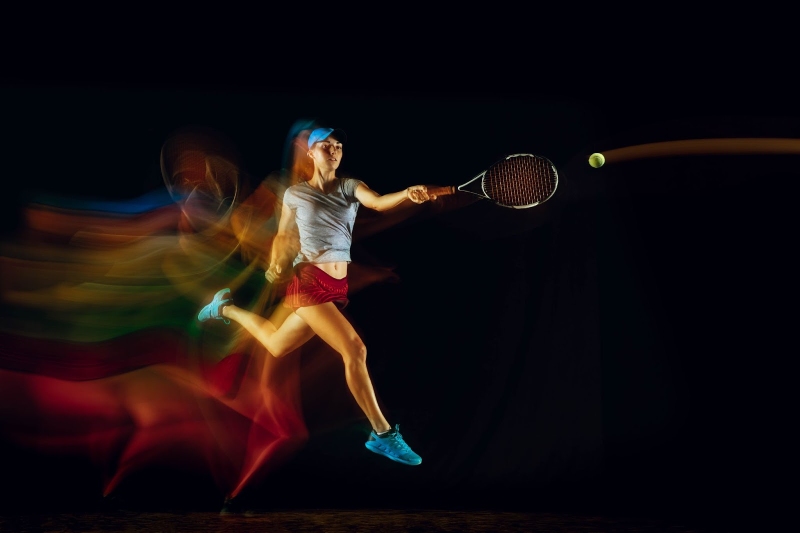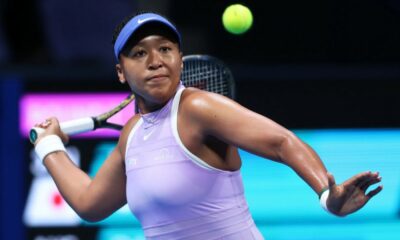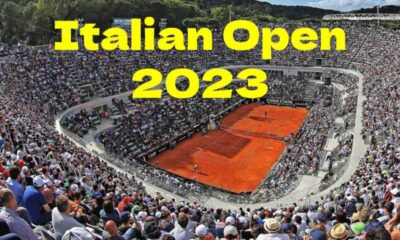Sports
Pavel Tchigirinski Discusses The Evolution of Tennis: From Lawn Courts to Hard Surfaces

Have you ever wondered about the origins of your favorite sport? The transition of tennis from its conception on lawn courts to modern hard surface courts has been a captivating journey. In this article, Pavel Tchigirinski explores the changes and innovations in tennis, highlighting the importance of adapting to new playing surfaces for success on the court.
What Is Tennis?
Tennis is a renowned racket game that can be played against a single competitor (singles) or between two teams of two participants each (doubles). The game utilizes a tennis ball and racket and is played on a rectangular court with a net in the center. The main objective is to hit the ball over the net and into the opposition’s court so it cannot be returned.
The History of Tennis
Tennis has a thriving history that spans over centuries. The origins of this game date back to the 12th century in France. Originally known as “jeu de paume,” meaning game of the palm, it was played using only bare hands. As time passed, rackets were introduced, and the game gained popularity across Europe. In 1874, after inaugurating the first tennis courts in the United States tennis has since become a global sport with millions of fans worldwide.
When Did Tennis Become Popular?
Tennis gained popularity in the 19th century, with its fan base quickly expanding in Europe and the United States. The creation of the Wimbledon Championship in 1877 significantly increased the sport’s global appeal. The success of this tournament sparked a surge of interest in tennis, solidifying its status as a widely recognized and celebrated sport worldwide.
The Evolution of Tennis Courts
From traditional lawn courts to modern hard surfaces, this section will explore each type of court’s unique characteristics and advantages
Lawn Courts
Lawn courts have been a traditional surface for tennis, known for their unique characteristics. Here are some critical points about lawn courts:
- Surface: Made of grass, which provides a fast and low bounce game.
- Maintenance: Requires meticulous care and upkeep due to grass’s tendency to wear out.
Clay Courts
Clay courts, also known as terre battue in French, which translates to beaten earth, are made of crushed shale, stone, or brick. These courts are known for slowing down the ball, emphasizing the importance of strategy and stamina.
The French Open is played on red clay, while the Italian Open and Madrid Open are played on red and blue clay, respectively.
Grass Courts
- Preparation: Grass courts require regular mowing to maintain a short, even grass height.
- Rolling: The court should be rolled to ensure a flat and firm surface.
- Irrigation: Consistent watering is crucial to keep the grass healthy and prevent it from drying out.
- Maintenance: Continuous monitoring and treatment for issues like moss growth and bare patches is necessary.
Hard Courts
Hard courts, such as concrete or acrylic, provide a fast and consistent playing surface suitable for all weather conditions. The expansion of tennis courts has resulted in a boost in the use of hard courts, resulting in changing playing styles and techniques for the game.
Hard courts have become a significant feature in modern tennis, with major tournaments like the US Open and Australian Open being played on these surfaces.
How Has the Evolution of Tennis Courts Affected the Game?
- Speed of Play: Tennis has been dramatically impacted by the evolution of tennis courts, with hard surfaces like concrete and asphalt increasing the speed of play and favoring power hitters and aggressive play.
- Rallies: Conversely, clay courts have slowed down the game, promoting longer rallies and strategic, patient play.
- Injury Rates: The shift to cushioned hard courts has also positively affected player well-being, reducing joint stress and minimizing injuries.
Considering these effects, it is clear that the evolution of tennis courts has greatly influenced player strategies, game dynamics, and physical tolls. As future innovations are made, it is important to prioritize a balance between speed and player well-being.
The Rise of Hard Court Surfaces
Introduction of Hard Court Surfaces
- 1912: The first introduction of hard court surfaces was tested at the U.S. National Championships.
- 1978: Hard courts were officially added to the Australian Open, marking a significant shift in surface preference.
- Advantages: Hard courts offer a consistent ball bounce, faster play, and are less affected by weather than other surfaces.
- Disadvantages: However, they can be harsh on players’ bodies, potentially leading to more impact-related injuries.
- Impact: Introducing hard court surfaces has dramatically influenced modern game strategies, encouraging aggressive baseline play.
Advantages and Disadvantages of Hard Court Surfaces
- Advantages: Hard courts offer consistent bounce and speed, making for predictable play. They are also durable and low-maintenance, making them suitable for year-round use.
- Disadvantages: These surfaces can be harsh on players’ bodies, placing more stress on joints and muscles. They can also push tennis shoes to wear out faster.
Impact on Players and Game Strategy
- Changes in Player Performance: Hard courts demand more physical exertion, leading players to adapt fitness routines for endurance and agility.
- Altered Game Strategy: The surface influences the shot selection and playing style, favoring baseline rallies and powerful serves.
- Increased Injury Risk: Hard courts pose a higher risk of impact injuries due to the firmer surface, affecting player longevity and career.
The Future of Tennis Courts
These characteristics will shape the way we play and participate in the game, and it is vital to understand their potential effects.
Technological Advancements
- Sensors and data analytics are integrated to track player performance and enhance training techniques.
- Development of smart tennis rackets and tennis balls embedded with technology to measure impact and spin.
- Utilization of virtual and augmented reality for immersive fan experiences and player training.
Environmental Considerations
Environmental considerations in tennis include using sustainable court materials, conserving water, and implementing energy-efficient lighting to reduce the sport’s ecological footprint.
Changes in Playing Styles
- Players’ physical fitness: With the shift to hard surfaces, players must focus on endurance, agility, and joint strength to withstand the more complex impact.
- Adaptation of playing techniques: Players have adjusted their strategies and shot selection from the traditional serve-and-volley style on grass to more baseline rallies on hard courts.
- Rise of defensive play: Hard courts have encouraged the development of defensive skills, leading to longer rallies and greater emphasis on stamina.
-

 Business4 weeks ago
Business4 weeks agoNayef Doleh Examines International Humanitarian Fundraising Strategies
-

 Business3 weeks ago
Business3 weeks agoHow to fill MSME Form 1? Step-by-Step Guide
-

 Business4 weeks ago
Business4 weeks agoHow Black Banx is Redefining Global Banking Strategies in 2025
-

 Festivals & Events4 weeks ago
Festivals & Events4 weeks agoInteresting Facts about St. Patrick’s Day
-
Business3 weeks ago
From Marine to Chief: The Leadership Journey of Sean Mannix
-

 Food4 weeks ago
Food4 weeks agoGeorgiy Balyuk Highlights Savannah’s Charm and Houston’s Best Eats
-

 Gadget3 weeks ago
Gadget3 weeks agoAfter Grand Success on BLDC Ceiling Fan, Eff4 Is Launching Smart Bulb
-

 Festivals & Events3 weeks ago
Festivals & Events3 weeks agoGoogle Celebrates Cherry Blossom Season with Animated Doodle

























